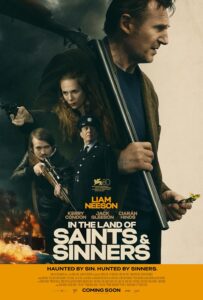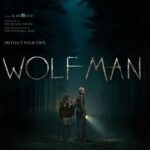
In the Land of Saints and Sinners
Belfast, 1974. Three terrorists, led by Doirean, have just blown up a pub where six people, including three children, died. During their escape they stop in the coastal town of Glencolmcille where Finbar Murphy lives, a man with a dark past who now leads a quiet existence by reading books, going to dinner with his neighbor and is also a friend of the local policeman. In reality, every now and then he comes back into action and settles old unfinished business. One day he sees bruises on the neck of a local girl, the daughter of a woman who works in the local pub. He thus discovers that the three terrorists are hiding near them. He does everything he can to defend the local community from their threat, even if he has to give up keeping his secret identity hidden.
Sin and the search for redemption. Suspended between Belfast and a coastal town, In the Land of Saints and Sinners recovers the climate of cinema on Northern Ireland’s terrorism with the explosive opening sequence where the gaze of Kerry Condon, in the role of the ruthless terrorist Doirean, would intervene to save the children and their mother who, due to an unexpected event, have stopped in front of the pub that is about to blow up.
The realism, the intensity, the tension of this moment recall both Belfast and Bloody Sunday. It is not so much the scene that directly recalls Branagh and Greengrass but rather the climate where violence can explode at any moment and where the street can become a space of war.
In the Land of Saints and Sinners thus engages from the start with cinema about terrorism in Northern Ireland with an immediate impact. Time plays a decisive role. There is a timer counting down before the bomb explodes. And even one of Finbar Murphy’s victims has a minute to speak, while the grave is being dug, before dying. However, time can also be suspended. There is the wait before taking action, there is the (impossible) hope that it can be eternal so that the true identity of the protagonist can never be revealed.
Thus the three souls of the film emerge. The first is the historical-political one. It’s a short but very inspired and happy part. The second is the action one and, in this respect Liam Neeson (already directed by Lorenz in A Man Above the Law) recovers traces of Bryan Mills’ character from the Taken trilogy which however risks being too explicit and, paradoxically less pressing, as in pub shooting scene. Finally, the third is the more physical one, linked to the landscape. And here the American Robert Lorenz, former producer for Clint Eastwood who also directed him in his first film as director, Back in the Game, creates a strange ghost film, where beyond the border of the sign thrown out of the moving car, there is an enchanted and spooky place, of evenings in the pub but also of corpses buried underground, strengthened by the presence of Ciarán Hinds, Colm Meaney and Jack Gleeson.








